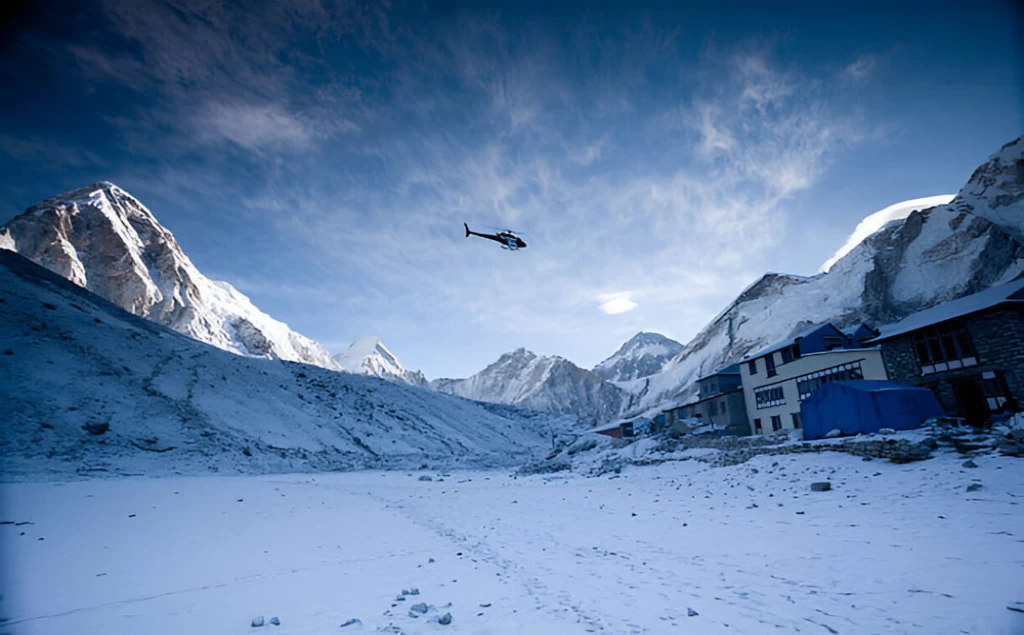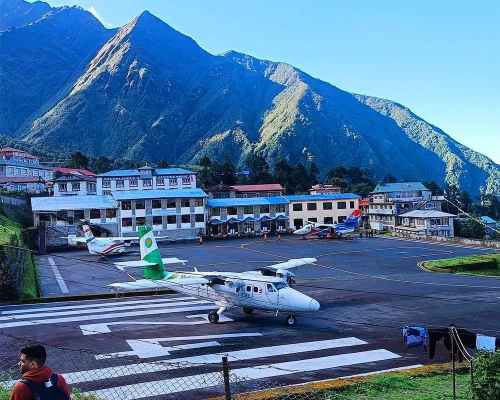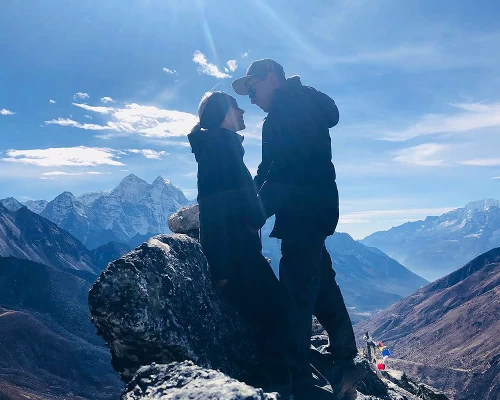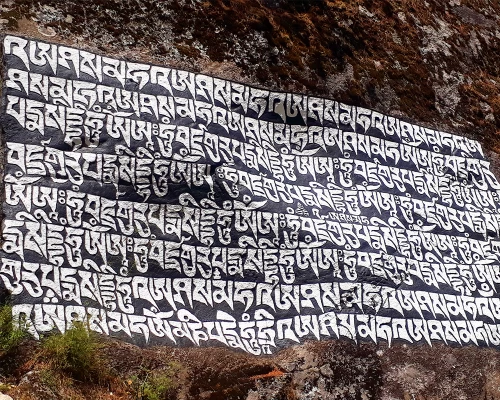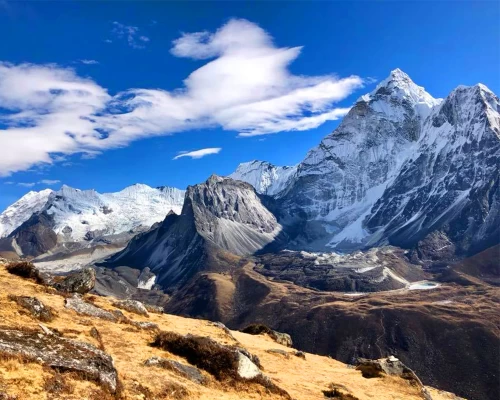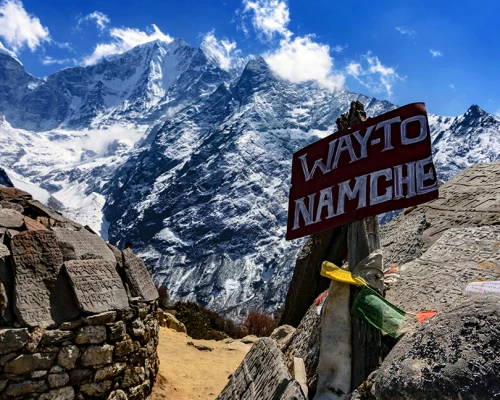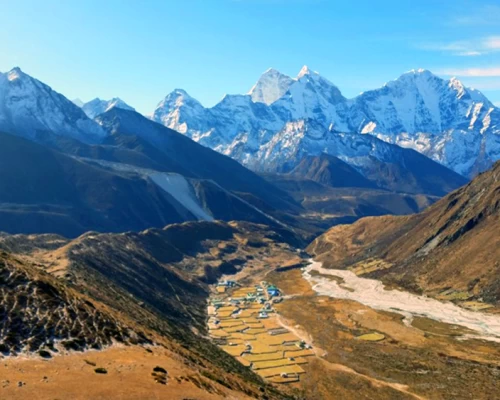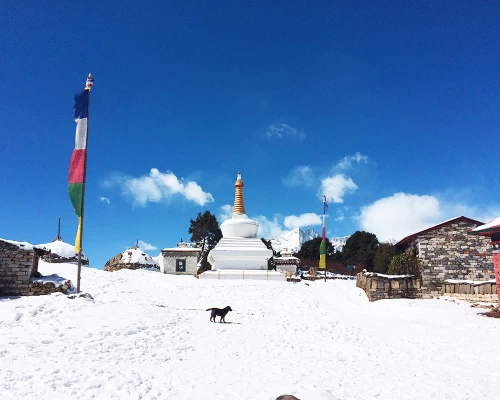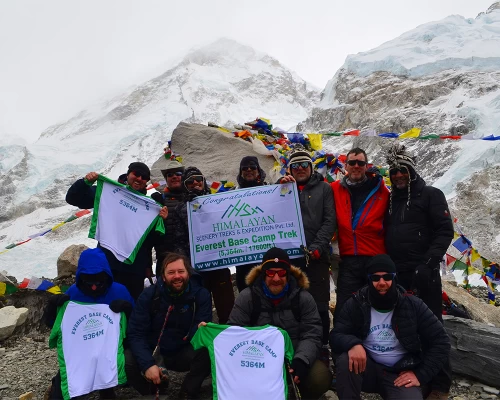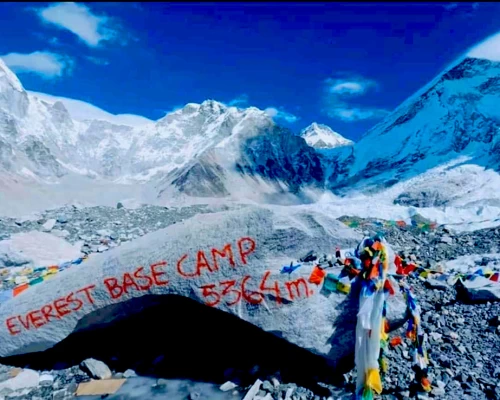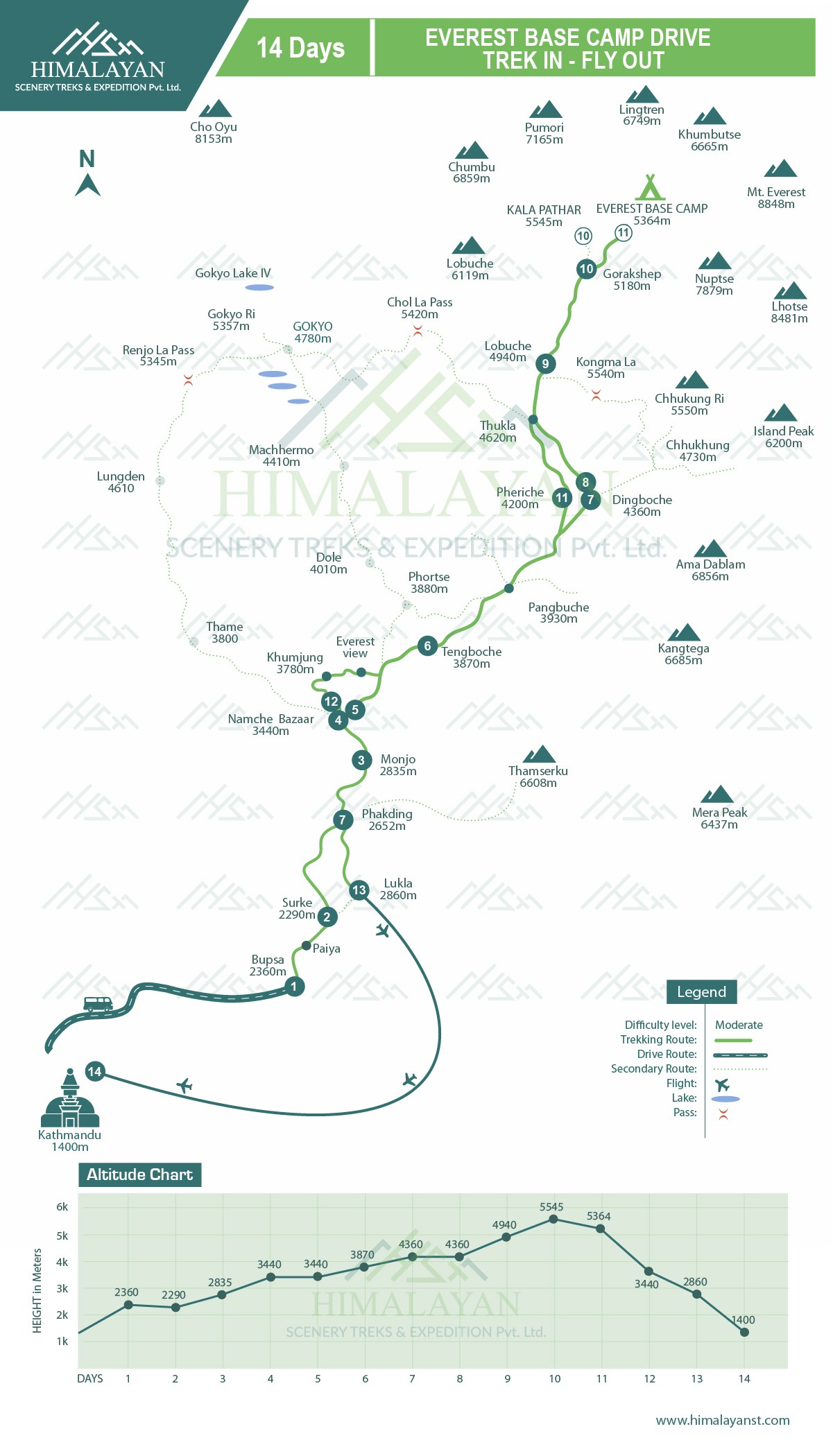The Everest Base Camp Trek by driving up to Bupsa is a classic route taken by mountaineers, adventurers, and trekkers. It is considered one of the most rewarding treks in Nepal. The route offers a unique experience to trekkers who want to witness the beauty of the Himalayas. They can immerse themselves in the Sherpa culture.
The classic trekking route of Everest Base Camp Trek by road distance is about 150 km including the drive route from Kathmandu. This road drive to Everest Base Camp Trek takes 13 days to complete. It takes you through the heart of the Khumbu region. It will showcase its spectacular mountain ranges, including Mount Everest. The trek offers stunning views of other mountains like Ama Dablam, Lhotse, Nuptse, and more.
Trekkers will explore the local culture and learn about the Sherpa lifestyle. They can also visit ancient monasteries along the way. The trek requires good physical fitness and proper acclimatization. It is a once-in-a-lifetime adventure that is worth experiencing.
Everest Base Camp Trek by Road: Overview and Bupsa Route

This trek is a popular route for trekkers to experience the majestic beauty of the Himalayas. Before the Lukla Airport was built, this trek was the only way to reach the Everest region. The route takes you through picturesque landscapes, quaint villages, and Buddhist monasteries. For trekkers who are looking for an alternative to the Everest Base Camp Trek, this can become the best choice.
Another reason to choose Everest Base Camp by road is usually due to the Lukla Flight. The first thing is Everest is one of the busiest trekking trails in the world. Due to that, there are flights from Manthali only during the peak season of Autumn and Spring. So, in the morning itself, you will have to rush to the Manthali Airport. From there still, it will not be so sure whether the flight would fly or not. This is why we always recommend that travelers have the second mindset ready.
We still are able to manage the road travel up to Bupsa which is the classic route to Everest Base Camp. Moreover, you will benefit from the Everest Base Camp by driving and trekking more than any other trekkers as in the similar cost to Everest Base Camp Trek or for seniors, you are going through many more villages. This way you will have more stories to tell and more exploration of the Everest Region.
The trek starts from Bupsa, a small village in the Solukhumbu district. You can reach up to Bupsa directly on a shared jeep managed by our trekking company. From Bupsa you need to keep on walking up to Lukla from where the main trail begins.
After reaching Lukla, trekkers can move to the gateway to Everest - Namche Bazaar.
The route from Namche Bazaar to Everest Base Camp offers many breathtaking views. Along the way, you'll pass through famous landmarks such as Tengboche Monastery, Dingboche, and Gorakshep. These places hold significant cultural and historical value. They are an excellent way to learn about the region's heritage.
Sir Edmund Hilary and Tenzing Norge Sherpa were the first to successfully summit Mount Everest. Their legacy lives on through these landmarks.
Also, Check Alternatives to EBC Trek in the Everest Region.
Best time to hike Everest Base Camp from Bupsa
The best time to do an Everest Base Camp trekking via Bupsa is from March to May or mid-September to mid-December. These times are better because they don't have a lot of snow or heavy rain. During winter, there's too much snow, and in the summer, there's too much rain. So it's best to avoid these seasons.
If you go in the spring or fall, you'll have better weather and a more enjoyable trekking experience.
